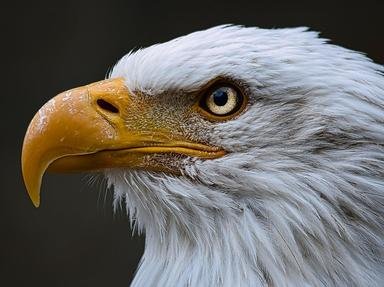Quiz Answer Key and Fun Facts
1. As I grew up in Indiana, we spent many lazy Saturday afternoons fishing on a small lake, where we often spotted this long-legged, grayish-blue water bird hunting by the shore. Its white head and large size always made it easy to identify..can you name it?
2. While living in Texas, I was rudely kept awake by this widespread and common gray and white mimid. He loved to sing a wide variety of songs at 1 a.m. Can you name him?
3. Next it's a move to Oklahoma, land of open fields and waving wheat. There we often encountered this pretty bird, with its bright yellow breast and black, brown, and white speckled back, singing from a field fencetop. The deep black bib or "V" on its chest made it easy to identify. Can you name it?
4. We're off to Alaska for two years, during which time we spotted many interesting birds. One of these we could identify easily by its black, crested head and blue back and tail. Which jay is it?
5. This next bird is usually found along riverbanks, marshes and bogs throughout North America. However, I spotted one in my mountainous backyard in Alaska. He sat very still while I studied him...I think he was lost and confused. With an extremely long bill, heavily striped back and white underside, and short orange tail, I identified him quickly. Can you?
6. Next it's a move to warmer climes, this time to the Mojave Desert in Southern California. We were amazed to see hummingbirds in the high desert, and ones so different from the Eastern ruby-throated that we were used to. The male of one of the species we spotted is the only hummingbird with a truly black throat. Can you name him?
7. Next we moved east to the Florida panhandle, an area rich with streams, small bays and bayous. One of my favorite birds to see, usually perched on a wire near a bayou, was this fish-diving bird. He was easily told by his large, fluffy-crested head, white throat and belly, and long, heavy bill. What is it?
8. Just before a tropical storm blew into the Florida panhandle, I spotted this bird. The sky was black and the wind was blowing, but there it was in my live oak tree. Its very large size, bright red crested head, white face and black back gave it away. Can you name it?
9. Another move, back to the Mojave Desert...this little fly-catching bird was spotted zooming around in my freshly-sodded backyard. Similar in size and shape to other flycatchers, this little bird can be told mainly by its rust-colored belly. Do you know it?
10. Here's another western hummingbird who often visits our desert home. The male is distinguished by his long violet throat feathers, which extend out from the sides. Can you name it?
Source: Author
djsgal
This quiz was reviewed by FunTrivia editor
crisw before going online.
Any errors found in FunTrivia content are routinely corrected through our feedback system.

